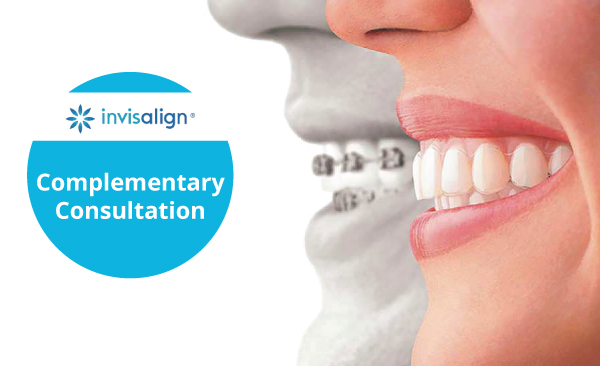In the quest for oral health, your choice of dental tools is as crucial as the technique you use. Brushing your teeth is a daily ritual, but are you sure you’re equipped with the right tools for an effective clean? The dental aisle in your local store can be overwhelming with its myriad of options.
Fear not! In this comprehensive guide, the Waterdown Smiles Dentistry team will walk you through selecting the perfect dental arsenal to keep your smile bright and healthy.
Understanding the Basics of Dental Hygiene Tools
Choosing the Right Toothbrush
The cornerstone of your dental arsenal is the toothbrush. But with so many types on the market – manual, electric, soft-bristled, medium-bristled – how do you choose?
Manual vs Electric Toothbrushes: Manual toothbrushes are affordable and easy to use. They require proper technique to be effective but are perfectly capable of cleaning your teeth thoroughly. Electric toothbrushes, on the other hand, do much of the work for you. They are particularly beneficial for those with limited mobility, such as older adults or people with disabilities. Studies suggest that electric toothbrushes might be more effective at reducing plaque and gingivitis than manual ones.
Bristle Type: Soft bristles are generally recommended. They are gentle on the gums and enamel, yet effective at removing plaque. Medium and hard bristles can be too abrasive, especially for those who brush vigorously, potentially damaging tooth enamel and irritating gums.
Toothbrush Head Size: A smaller toothbrush head is preferable as it can better reach all areas of the mouth, including the hard-to-clean back teeth.
The Role of Toothpaste
Toothpaste is more than just a flavoring agent. It’s an essential part of your brushing routine, providing the necessary abrasion to remove plaque and food particles.
Fluoride Toothpaste: Most dentists recommend fluoride toothpaste due to its proven benefits in strengthening tooth enamel and preventing decay. However, be sure to use the right amount – a pea-sized dab is sufficient.
Specialty Toothpastes: There are toothpastes for every need – whitening, sensitivity, tartar control, etc. Choose one that aligns with your specific oral health requirements. For instance, if you have sensitive teeth, a toothpaste designed for sensitivity can make a significant difference.
Beyond Brushing: Flossing and Mouthwash
Flossing is Not Optional
Flossing is an integral part of oral hygiene, yet it’s often neglected. Flossing once a day helps remove plaque and food particles from between your teeth where a toothbrush can’t reach.
Types of Floss: There are many types, including waxed, unwaxed, and dental tape. Waxed floss is smoother and easier to slide between tight teeth, while unwaxed floss can be more effective in removing plaque. Dental tape is broader and flatter, designed for those with wider spaces between their teeth.
Mouthwash: The Finishing Touch
Mouthwash isn’t just for freshening breath. It can be an excellent adjunct to brushing and flossing, especially therapeutic mouthwashes which contain active ingredients to combat dental plaque, gingivitis, cavities, and sensitivity.
Cosmetic vs Therapeutic Mouthwash: Cosmetic mouthwashes primarily tackle bad breath and leave a pleasant taste, but they don’t address dental health issues. Therapeutic mouthwashes, on the other hand, have active ingredients that protect against dental problems.
Choosing the Right Mouthwash: Look for a mouthwash with fluoride if you’re prone to cavities. If you have gum disease, a mouthwash with antibacterial properties is beneficial. Always check with your dentist to find the best option for you.
Other Tools and Accessories
Interdental Brushes and Water Flossers
For those who struggle with traditional flossing, interdental brushes and water flossers are great alternatives. Interdental brushes are perfect for cleaning between wider gaps, while water flossers use a stream of water to remove plaque and food particles from between teeth and below the gumline.
Tongue Cleaners
A tongue cleaner or scraper can help remove bacteria and food debris from the tongue’s surface. This can improve breath and contribute to overall oral cleanliness.
Children’s Dental Tools
Selecting the right tools for children is essential in developing good oral hygiene habits. Child-sized toothbrushes with soft bristles are a must. Fluoride toothpaste should be used in a tiny smear for toddlers and a pea-sized amount for older children. Electric toothbrushes can be more engaging for kids and might encourage better brushing habits.
When to Replace Your Dental Tools
Regular replacement of your dental tools is necessary for effectiveness and hygiene. Toothbrushes should be replaced every three to four months or sooner if the bristles are frayed. Floss should be dispensed fresh for each use, and mouthwashes should be monitored for expiration dates.
Personalizing Your Dental Care Routine with Waterdown Smiles Dentistry
In conclusion, choosing the right dental tools is a personalized journey and a crucial aspect of maintaining oral health. At Waterdown Smiles Dentistry, we understand that each individual’s needs are unique. We encourage you to consult with us to tailor your dental arsenal to your specific needs.
Remember, while the right tools are essential, technique and regular dental checkups are equally important. Regular visits to your dentist ensure that your oral health is on the right track and provide an opportunity to discuss and update your dental care routine.
We hope this guide has provided you with valuable insights into selecting the best dental tools for your oral health. If you have any questions or need further advice, feel free to contact us at Waterdown Smiles Dentistry. Let’s work together to keep your smile healthy and bright!




